Cobalt violet (PV14)

The cobalt violet we know today was first manufactured in 1859 by the French chemist Salvetat, the manufacturing process is costly which made the pigment expensive, that it is also very weak, which can make it less useful for artists, may be an explanation why the pigment did not become so popular, it was replaced only ten years later by manganese violet. Despite this, the pigment is still used, many paint manufacturers have it in their range, but not all. Some manufacturers fake the color (through color mixtures with completely different pigments) because it is so expensive, perhaps also due to its light toxicity, all colors made with cobalt are slightly toxic.
There are also relatives of the pigment which is slightly redder and even weaker (PV49 and PV47)
Cobalt violet is milky whitish, a property that it shares with several cobalt colors, the color shade is weak and the tone is a bit dull blue-violet, with some manufacturers more red-violet. The color granulates a lot, if the color had been stronger the granulation would have been noticeably distinct. Cobalt violet does not stick very well to the paper, it is easy to wash off. The color is very reluctant wet in wet, it does not spread so well in the wet surface, that property it shares with many granulating colors.
Cobalt violet lacks a complementary color among other pigments, the closest is phthalo green yellow shade but the mixture becomes bluish.
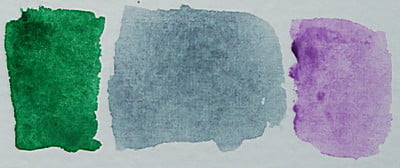
So the color is expensive, milky pale and awkward in mixtures, yet many artists use it, me too, why? Could it be because it is so beautiful, a color with character despite all its shortcomings.
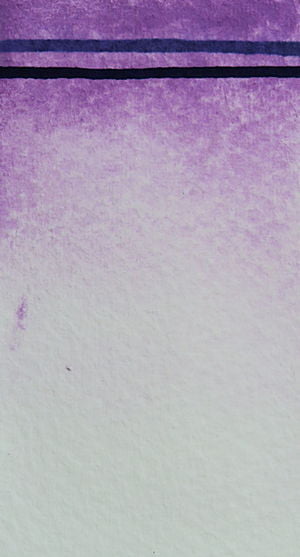


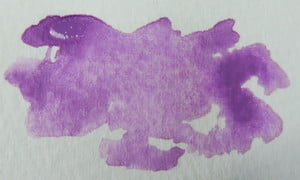
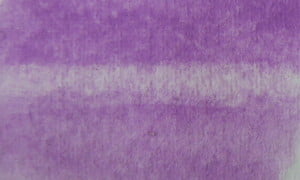
Properties
Color index name: PV14
Lightfastness: Excellent
Transparency: semi-transparent
Staining: No
Granules: Yes

Some manufacturers that have cobalt violet
WINSOR & NEWTON Cobalt violet PV14
BLOCKX Cobalt violet PV14
ROYAL TALENS REMBRANDT Cobalt violet PV14
DANIEL SMITH Cobalt violet PV49
DANIEL SMITH Cobalt violet deep PV14
M. GRAHAM Cobalt violet PV14
HOLBEIN Cobalt violet light PV47
LUKAS Cobalt violet PV14
Cobalt violet is a very expensive pigment, therefore it is often falsified.
These manufacturers do not have genuine cobalt violet even though they have colors with the name, several of them have the good taste to indicate the word “hue” in the name, which indicates that it is not genuine.
SCHMINCKE Cobalt violet hue PV62
SENNELIER Cobalt violet deep hue PR122, PV16
SENNELIER Cobalt violet light hue PR122, PV16, PW6
OLD HOLLAND Cobalt violet light PB73, PR112, PV19, PV23
OLD HOLLAND Cobalt violet dark PB73, PV19, PV23
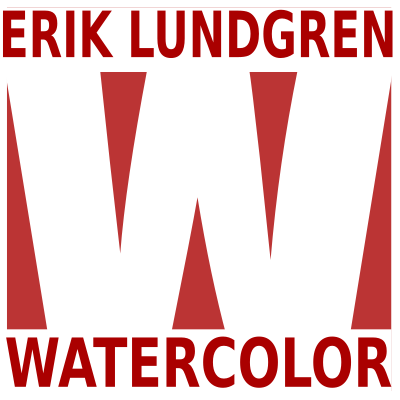

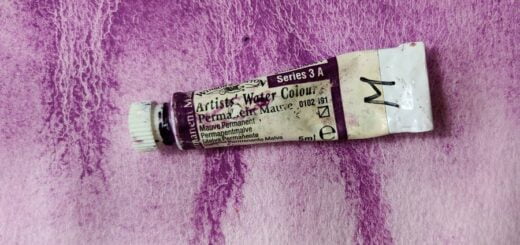

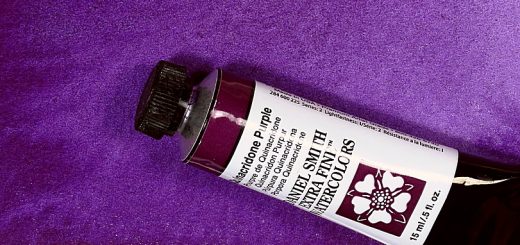









Cobalt violets makes some unique seperating neutrals and i love that they are low tint and lifts so well. Im obsessed with all cobalt watercolors. Do you think most pv14/pv49 are all milky because of the need for more fillers or wetting agents?
I also have many cobalt colors. they are great but all have issues with being pale and a little opaque and milky, i think that is the properties of the pigment and not what the manufacturer puts in the colors.
Most manufacturers probably still use Ox gall, which is transparent and slightly yellowish, as a wetting agent, so I don’t think that could be the problem.
As for the different fillers that manufacturers put in their colors, they are very secretive, but I don’t think that any fillers that they put in the color would affect the result that much. It is more likely just that the pigment has such properties.
Try cobalt colors from Natural pigments, absolutely free from additives and fillers, then you will know if they are fillers if they make the colors milky.
https://www.naturalpigments.eu/searchanise/result?q=cobalt&page=1&rb_categories=Watercolor%20Paints